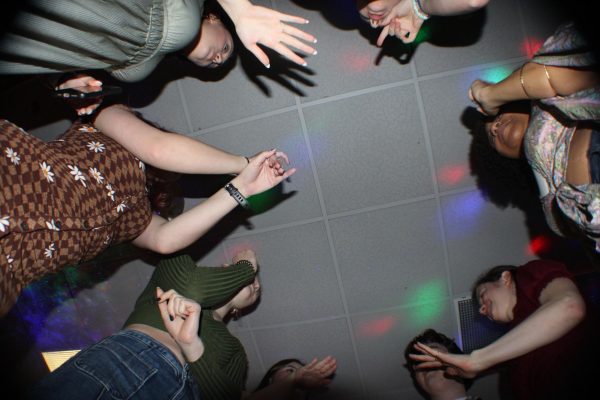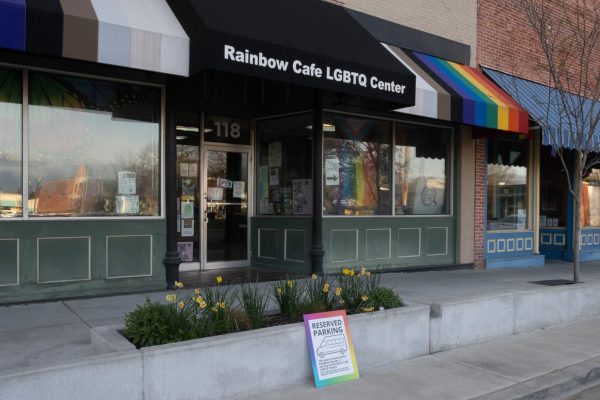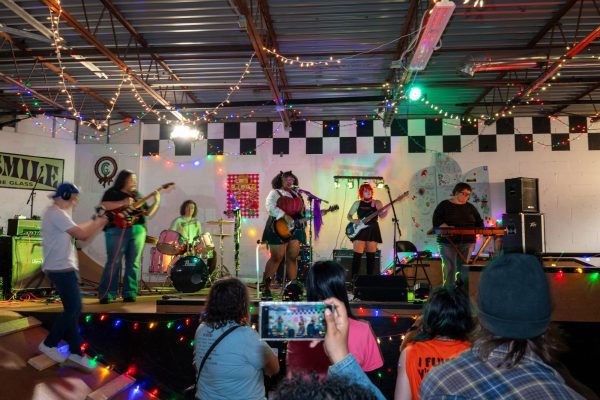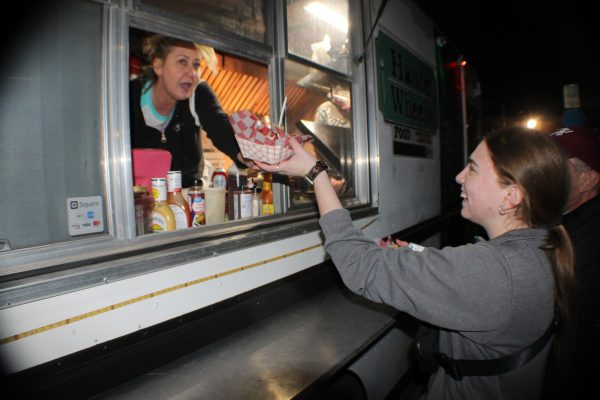“Cooked” documentary retrospective highlights un-learned lessons from disaster response
In the wake of the COVID-19 pandemic, tens of millions of people around the country have become keenly aware of massive gaps in the US public health system.
Researchers have begun to look back at past pandemics and epidemics, like the AIDS crisis, for insight into best practices galvanizing the public in mitigating spread and managing long term effects of the disease.
Others are looking at a different sort of disaster, those caused by extreme weather events, as another learning source.
Advertisement
In a series of panels hosted in the summer of 2020, filmmaker Judith Helfand co-organized a retrospective of her film “Cooked: Survival by Zip Code” to review some solutions that can be gleaned from these catastrophes, most of which have never been adopted.
“Cooked,” opens with Helfand’s reflection on Hurricane Sandy, which devastated residents around her New York City home.
Helfand was lucky enough to have a disaster prepping brother and a mom in the suburbs, where their biggest inconveniences during the storm were light outages and a badly drawn Scrabble hand. Meanwhile, surging floodwaters swept past brownstones, shown in archival news footage, making the city impassable and stranding residents.
That reflection led Helfand on a quest to find out just how communities prepare for and recover from disasters like Sandy. She ended up honing in on a 1995 heat wave in Chicago during which hundreds of people died.
The event was so startling it was picked up by national news outlets, who found nearly all of the deaths were in low-income Black neighborhoods on the city’s south and west sides.
The event represented such a complete failure of society and government to support residents in a time of crisis, numerous organizations point to it as an inciting incident in implementing disaster preparedness measures.
Yet, as the movie shows, those measures don’t address the deeply rooted racial and economic problems that are themselves a recipe for disaster.
Advertisement*
The source material for the documentary is Erik Klinenberg’s book “Heat Wave: A Social Autopsy of Disaster in Chicago.”
“Heat waves kill more Americans than all of the other so-called natural disasters combined,” Klinenberg says near the beginning of the movie, addressing a government committee. “Disasters are not just important because they represent extreme cases, but also because, in looking at them closely, we learn to recognize conditions that are present but difficult to perceive.”
On screen we see a transition from Chicago’s gleaming lakefront and majestic downtown skyline, to neighborhoods farther south where lots are overgrown, buildings are boarded up and streets are practically empty compared to the city’s bustling tourist center.
The area used to be teeming with activity, community organizer Orrin Williams says in the movie.
“Only the downtown had more economic activity than the 63rd and Halsted corridor,” Williams said.
Black and white footage, over fifty years old, shows theaters, department stores, restaurants and all of the city traffic that goes with them.
“If the heat wave happened when I was growing up, I think the outcome would’ve been a lot different. When it got really hot people would sleep on the back porch or sleep in the park,” Williams said. “People felt much safer.”
In 1995 the people who died as a result of the heat wave, mostly elderly people and people with other health conditions, were confronted with severe, “community structural issues,” that left them defenseless, former City of Chicago Director of Epidemiology Steve Whitman says in the movie.
Businesses where people might go to seek out a cooling break largely disappeared, libraries and schools that served the area closed, residents often can’t afford air conditioning units or the electricity to run them, there’s a lack of public green space, and a fear of neighborhood violence leads people to fear opening a window lest someone break in.
The result was 739 deaths over the course of four days of over 100 degree heat.
As new bodies were found each day, and for weeks after the weather had cooled, the coroner’s office was so full the city had to requisition nine refrigerated trucks to store all of the bodies that needed to be examined and cataloged.
Maureen Finn, a Cook County forensic scientist, described the office situation as “running a gauntlet” of dead bodies.
The situation feels eerily familiar as the US healthcare system is stretched past capacity in waves as the COVID-19 pandemic lurches on.
Then-Mayor Richard M. Daley tried variously to place the blame for the deaths on victims for not seeking help and family members for not checking in. He also called into question the efficacy of the official count of excess deaths, another tactic people in the US have seen play out on a mass scale during COVID.
“I think there was a lot of denial… A lot of heads of state… it didn’t touch them,” southside resident Geraldine Flowers says in the movie. “It’s about a lack of compassion on a lot of parts.”
The difference between the vibrant south side of William’s childhood, and the current reality is not the result of a tragic accident, or benign neglect.
Retired Chief Medical Officer for the Cook County Department of Public Health Linda Rae Murray says, in the movie, while she was outraged by the way the heat wave was handled, she wasn’t shocked by it.
“I know what happens during heat waves, and I could see that the city is not responding accordingly,” Rae Murray says. “Even if the city had responded in an appropriate way, we would’ve seen differences, hopefully not as great, between poor communities that are under-resourced and communities that are better resourced.”
Over time, segregation, government restrictions on certain loans for Black people, referred to as “redlining,” predatory lending practices and systematic disinvestment from redlined communities devastated the local economy and created the foundation for the vast majority of present day community problems.
“Racism is not a disaster. It is something human beings invented, created and keep healthy,” Rae Murray says. “Segregation is something human beings invented, specific human beings, for specific purposes.”
Whitman explained the zip codes with the highest number of deaths and the highest levels of poverty had significant overlap. Of the 14 neighborhoods with the highest percentage of residents in poverty, seven were also zip codes with the highest number of deaths.
“None of this is rocket science,” Murray says. “We all know what it takes to make a healthy neighborhood. It doesn’t require you to have mansions on the street. It requires you to have the grocery stores, the coffee shops, the restaurants, the beauty parlors, the barbershops. These are all institutions that help make streets safe. They provide places for people to go for help,”
Klinenburg said the most horrific part of the incident was not just that so many people died due to circumstances that were wholly preventable, but also how it happened.
“It’s the way they died, alone and isolated,” Klinenburg says, again foreshadowing the isolation of the current pandemic.
Following the heatwave the city implemented a mitigation plan and climate action plan that included a centralized emergency outreach and response center, a public relations campaign and some limited downtown greenspace initiatives.
Yet, the south and west sides still lack the same facilities they were lacking in 1995. Helfrand captures a scene of children playing in the stream of an uncorked fire hydrant outside Jim Harris Cleaners, in lieu of a pool or park amenities, which police arrive to shut off, and disperse the hot crowd.
Klinenberg, being interviewed for a 10th anniversary retrospective of the heat wave, says ominously, “My biggest concern now is if we refuse to come to terms with this crisis we’ll doom ourselves to experience it again.”
Whitman explains in a seminar in a tiered-seat classroom that Black communities in Chicago have a life expectancy 15 years lower compared to residents in “the Loop” downtown. Those communities also have worse outcomes for a broad swath of things like cancer, unemployment, school closings, and on.
“The differences in health and measures of health are growing worse everywhere we look in Chicago, and the reason that’s happening is because the rich are getting richer and the poor are getting poorer… they’re getting sicker as well,” Whitman says.
Soon after the retrospective press tour depicted in the documentary, another disaster strikes. Hurricane Katrina devastated New Orleans, especially poor Black people who had significantly less ability to flee the storm and resulting flood.
By this point we can make out the emerging pattern playing out across the country, and trace it back to our own recent experiences with disasters, such as forest forest fires, the deep freeze in Texas, oil spills, epidemics and tornadoes. The communities without the resources set aside for crises are also going to bear the brunt of the damage.
Helfrand sets out to observe a variety of disaster preparedness seminars and drills to see just what communities and groups to address recovery problems are getting for their money.
One press event in a Chicago suburb, where past mayoral candidate Tori Preckwinkle was a keynote speaker, displayed a couple dozen multimillion dollar response vehicles.
Another drill in Chicago’s Englewood neighborhood used an abandoned public housing project for a tornado response drill, including hired actors with faux injuries, downed trees and demolished cars. Helfrand notes Chicago experiences, on average, one Tornado related death a year.
The largest venture is a Federal Emergency Management Agency (FEMA) joint operation drill simulating a massive midwest earthquake involving over 10,000 people.
“I was too busy marveling at our nation’s ability, a seemingly unconditional commitment to save lives, marshall resources, rebuild infrastructure and ensure citizens are fed, housed and provided medical care,” Helfrand says in a voice over. “That is, as long as it’s in the wake of a natural disaster.”
Helfrand asked officials and seminar attendees if those same resources could be deployed to strengthen and buffer communities experiencing the slow moving disaster of extreme poverty.
“Every day I go into an exam room and I work with people that have medical conditions, much of which could have been prevented or at least made much easier to deal with if they had the structural conditions they need to stay healthy,” Rae Murray says.
3,200 people die just in Chicago every year from issues that could have been mitigated, Whitmer says.
In one of the retrospective seminars hosted in 2020, Thea L. James, an associate chief medical officer at Boston Medical Center, said the safety net hospital she works at sees mostly patients with these kinds of avoidable medical issues.
“By design, our patients and these communities have lower health status due to things like food insecurity, housing insecurity, lower levels of education attainment,” James said. “A key factor and root cause [is] lower income, lack of financial stability, and lack of opportunities to build assets or build wealth.”
The year before COVID, 34.7% of all admissions to Boston Medical were Black. That percentage increased to over 40% in 2020, and non-White people accounted for 80% of all deaths in that hospital system.
Maudlyne Ihejirika, a Chicago Sun-Times reporter and moderator for another of the Zoom seminars, said we’re facing the same problems that were pointed out in the aftermath of the Chicago heat wave crisis, 25 years later.
Most of those problems were also outlined decades earlier in government reports like the Kerner Commission report on civil disorders, which followed mass uprisings in the 1960s.
That report opens with a quote from then-President Lyndon B. Johnson.
“The only genuine, long-range solution for what has happened lies in an attack— mounted at every level—upon the conditions that breed despair and violence. All of us know what those conditions are: ignorance, discrimination, slums, poverty, disease, not enough jobs. We should attack these conditions—not because we are frightened by conflict, but because we are fired by conscience. We should attack them because there is simply no other way to achieve a decent and orderly society in America.”
Those lessons have yet to be transferred into mass action.
“Bodies once again have piled up in communities of color, in communities plagued by poverty, in communities, even more so today, disinvested,” Ihejirika said. “Did we learn anything? I dare say no.”
Jason Flynn can be reached at jflynn@dailyegyptian.com, by phone at 872-222-7821 or on Twitter at @dejasonflynn. To stay up to date with all your southern Illinois news, follow the Daily Egyptian on Facebook and Twitter.
Advertisement














